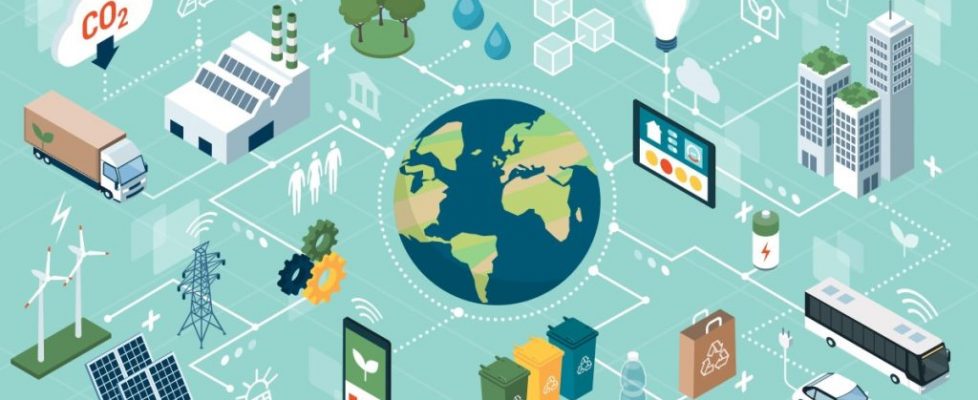Planet
As one of the pillars of sustainability, planet is the origin of creation and lives, and the fashion industry relies on natural production materials. For example, cotton is essential for fashion, but an extensive quantity of water is needed for crop yield and dye process (Condé Nast, 2020). Sustainability in the fashion industry may be responsible to the planet to ensure their long-term development.
Refers to the triple bottom line, many fashions business adopt strategies becoming globalised to boost profit, which does benefit society and the economy by providing jobs and GDP, but it leads to massive pollution on the planet. There are some ways in which businesses act responsibly for the planet.

According to the Sustainability Development Goal, responsible consumption and production are vital within the fashion industry. Circular economy (CE) is a way fashion business could adopt to utilize recourses during production. CE turns goods at the end of their service life into resources for others. For instance, reusing unrecyclable products or repairs rather than buying new ones. Therefore, reprocessing of goods and materials generates jobs and saves energy while reducing resource consumption and waste (Stahel, 2016).
Also, slow fashion could be wildly introduced because it allows raw materials to grow naturally and items to be produced slowly in small batches, which reduces resource consumption and waste (Cline, 2012). Over-consumption is always a big issue; reducing consumption in fast fashion could effectively decrease waste during mass production. On the other hand, it may be insufficient for businesses to sustain profit due to the higher prices of slow fashion items compared to mass-produced apparel (Jung and Jin, 2016).
However, education and awareness need to be spread to consumers. There is an attitude-behavior gap between fashion consumers’ interest in environmental protection and ethical consumption. (Niinima¨ki, 2010). Even though business is trying to be environmentally friendly, it is hard to let consumer purchase sustainable brands and decrease a large amount of consumption. Therefore, this phenomenon could let the business down by being ethical but with low profit. Based on this situation, the brand could adjust its mission to sustainability so it could attract customers’ value on environmental importance.
In conclusion, sustainability is a long-term business goal that businesses can only achieve gradually. Steadily adjusting the production line and product’s lifespan and effective use of material could make business more sustainable. Nevertheless, important is how businesses could drive customers’ motivation to have good buying habits.
Cline, E., 2012. Overdressed. New York: The Penguin Group, p.122.
Condé Nast, 2020. The Sustainable Fashion Glossary. [online] Condé Nast. Available at: <https://www.condenast.com/glossary> [Accessed 7 October 2022].
Gwilt, A., 2020. A practical guide to sustainable fashion. London: Bloomsbury Visual Arts, p.77.
Hill, J. and Lee, H., 2015. Sustainable brand extensions of fast fashion retailers. Journal of Fashion Marketing and Management, 19(2), pp.205-222.
Jung, S. and Jin, B., 2016. Sustainable Development of Slow Fashion Businesses: Customer Value Approach. Sustainability, 8(6), p.540.
Stahel, W., 2016. The circular economy. Nature, 531(7595), pp.435-438.
